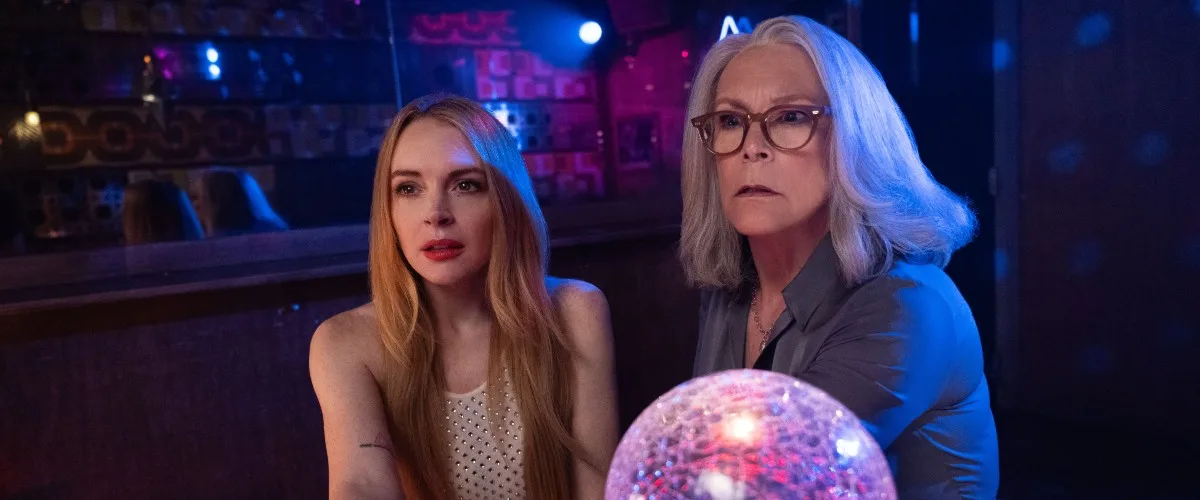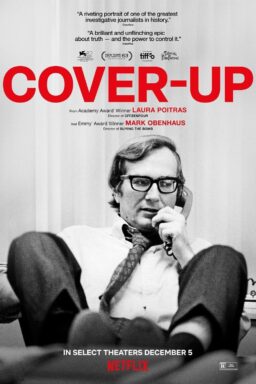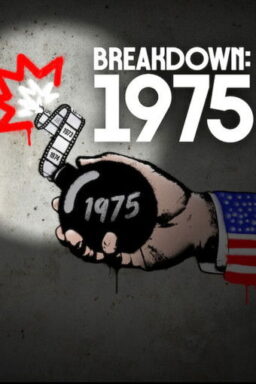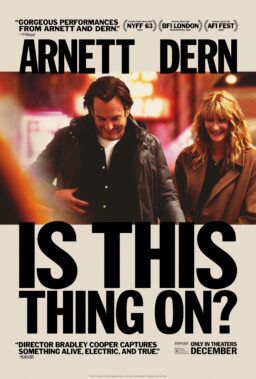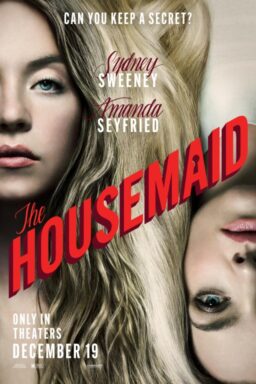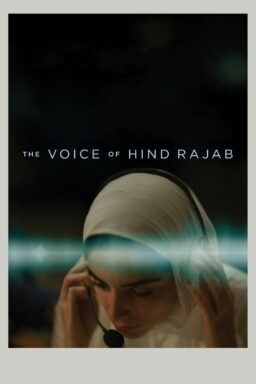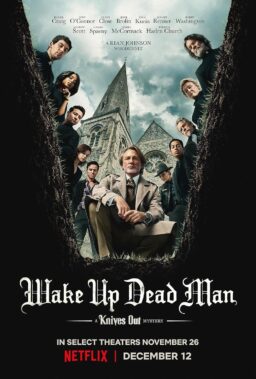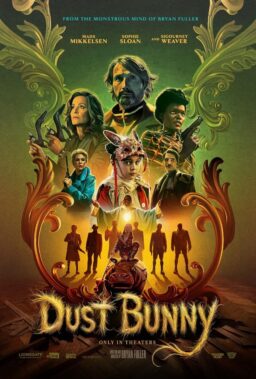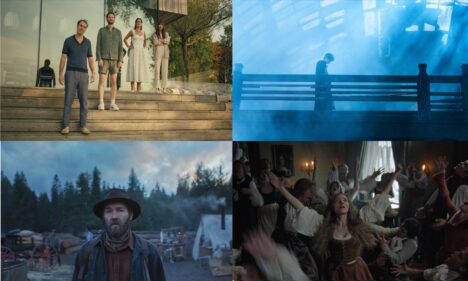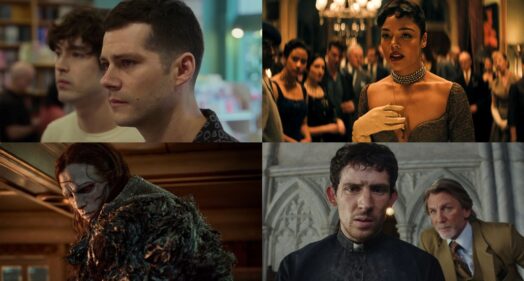If you loved the 2003 “Freaky Friday,” you’ll probably enjoy “Freakier Friday,” for the simple reason that it’s more or less the same movie, but with new characters added to the existing cast, and more complicated plot mechanics. Way more complicated. This is “Freaky Friday” to the fourth power. Instead of two characters switching bodies, there are four now, and one of them is from outside of the family, and there are so many echoes of the 2003 version in the script that it’s like we’ve been turned loose inside a giant prism.
The story still focuses on a wedding. But instead of the mom from the first movie, widowed therapist Tess Coleman (Jamie Lee Curtis), preparing to remarry, the bride is the daughter from the first one, Anna Coleman (Lindsay Lohan), who’s now in her late thirties and has a teenaged daughter named Harper (Julia Butters, costar of “Once Upon a Time in Hollywood” and “The Fabelmans,” all grown up and ready to play the lead). The three generations of Colemans are living a cushy life in Los Angeles. Tess is still a therapist but has branched out to become a parenting podcaster. Anna seems eons away from her days playing in her onetime garage band Pink Slip: she’s now a talent manager who helps run the career of singer-songwriter Ella (Maitreyi Ramakrishnan, star of Netflix’s “Never Have I Ever”) and has abandoned her own work.
Change arrives in the form of Eric Davies (Manny Jacinto), a London restauranteur who’s in Los Angeles to open a new venue. Eric is in the same narrative slot as Tess in the first film. He’s devoted to his own daughter, the fashion-obsessed Lily (Sophia Hammons), as Tess was to Anna in the original movie. He’s also a widower who’s ready to move on. He sees a possible future in Anna. But when the bride and groom’s daughters contemplate it, they want to run away screaming. Harper is alarmed by the likelihood that Anna might uproot her and go to London to move in with the Davies family. Lily doesn’t want it, either.
There’s personal animosity between the girls as well. Harper is a surfer who can’t wait to be independent and cultivates an outsider’s vibe. She doesn’t pair well with Lily, a snooty fashionista who seems on-track to become one of the Heathers. They don’t even like each other enough to be lab partners, let alone stepsisters.
The body swap in the sequel is a very contrived seance by a psychic (Vanessa Bayer) that ends with a four-way trade. See if you can follow this after one reading: Lily ends up in Tess’s body. Tess ends up in Lily’s body. Anna ends up in her daughter’s body. Harper ends up in Anna’s body. So we’ve got a grandmother playing a teenage girl, an adult woman playing a teenage girl, one teenage girl playing a thirty-something mother, and another playing a grandmother.
It would be easier to keep track of who’s who if screenwriter Jordan Weiss and director Nisha Ganatra (of “Chutney Popcorn” and “Late Night”) and the performers had made it a little easier. But the characters and the body-swaps have been conceived in a way that blunts their impact and sometimes makes things hard to follow. Maybe four was too many anyway, but if they were hell-bent on doing it that way, they should’ve put more thought into the relationships, in terms of performance and motivation.
Jamie Lee Curtis is one of the youngest-acting seniors in cinema history, and she’s such a ubiquitous presence in TV series and ads—as well as on talk shows, news programs, and social media—that when you see her playing teenager, bouncing around with excitement and cringing at embarrassing behavior and getting comically self-righteous, your mind says, “Oh, that’s Jamie Lee Curtis, the 65-year old with the aura of a smart, pugnacious teenager.” And if Tess is being inhabited by Lily, why isn’t she speaking with a British accent? Wouldn’t it have been funnier to watch Jamie Lee Curtis struggle to repress an English accent she never had before? For that matter, why isn’t Lily talking like the American actress Jamie Lee Curtis, or at least trying to approximate the way Curtis delivers her lines when she’s playing Tess?
Lohan and Butters have a different version of the same problem. Butters has incredible gravitas to be so young. She was just eight when she held her own with Leonardo DiCaprio in the scene that unlocked his character’s soul, and she nailed it so completely that she’ll probably be in movies forever if she (to quote “Freaky Friday”) makes good choices. Lohan, on the other hand, is a 39-year old whose celebrity has been defined by an arc that took her from Disney Channel star to music and movie star to self-inflicted disaster to recovering, hard-bitten survivor, yet somehow she’s still emitting the energy of that 18-year old who squared off against Jamie Lee Curtis, who’d been in films for over 25 years by that point, and made it seem like we were witnessing a meeting of equals. Putting a young-acting thirty-something and an old-acting teenager into each other’s parts doesn’t give either performer a lot to work with.
It’s still a funny and warm movie, and engineered and promoted in such a way as to be critic-proof, so there’s no point nitpicking it to death. This viewer just wishes that, with such a constellation of talent assembled in one film, “Freakier Friday” had risen to the occasion and pushed them to the outer edges of their abilities instead of putting them through their paces. Or, at the very least, made more of all the gifts it was blessed with.
One element that probably won’t be dwelled on in reviews, because it really has nothing to do with the story, is Lohan’s aura. It’s uniquely fascinating. She’s still beautiful, but now looks like a beautiful woman who’s been knocked around by life but is still trying to hold onto her remaining shreds of hope. Some of the most memorable actresses in cinema have had that sort of energy. Think of Sharon Stone in “Casino” or Marilyn Monroe in “The Misfits,” or Gena Rowlands in anything. Sometimes you catch glimpses of what seems like deep trauma and distrust in Lohan’s eyes, along with a determination to overcome it and make art from it. None of that is innate to the character. It’s residual aura. And it’s more compelling than the shenanigans she’s expected to sell to us.
Lohan is good in this movie, sometimes better than good. But one still hopes that different, more demanding opportunities lie ahead. When she re-entered acting a few years back after a long absence, she did a string of romantic comedies (“Our Little Secret,” “Falling for Christmas,” “Irish Wish”), and now she’s in a legacy sequel to a Disney family film. There’s nothing wrong with that except that a lot of people could play those roles, but nobody else could be Lindsay Lohan. Hopefully the upcoming Hulu series “Count My Lies,” about a woman who deceives her way into the life she always wanted, will set her on the road to material that’s as real as she is.

